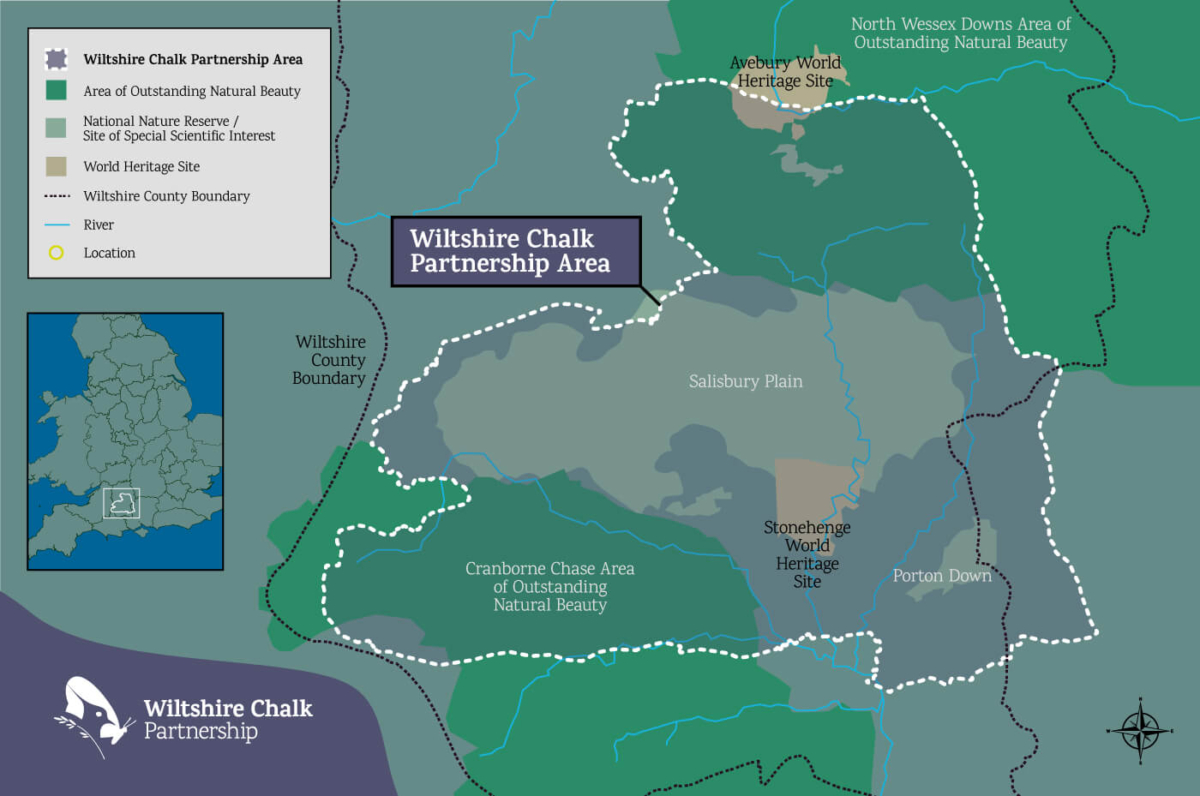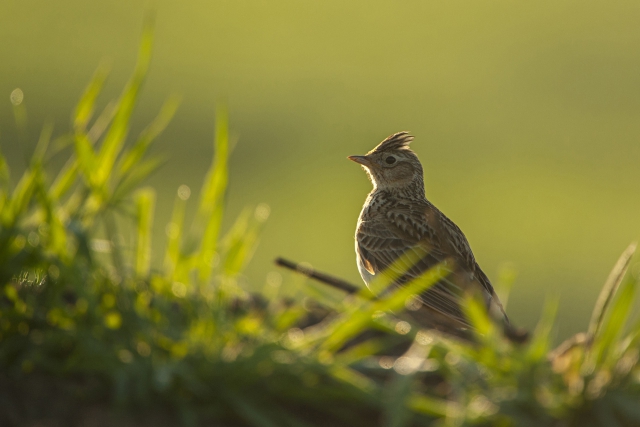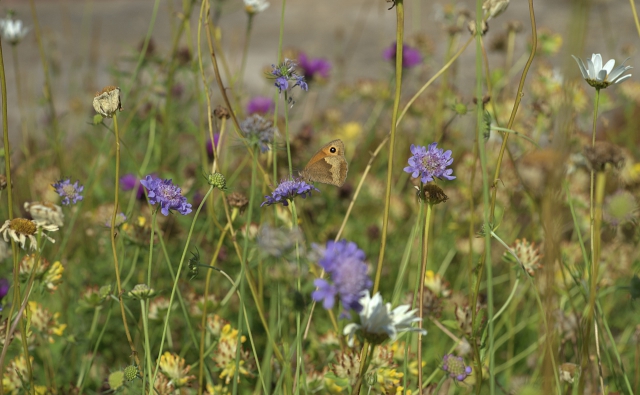Home to half of the UK’s remaining chalk grassland habitat and one of the world’s largest chalk river systems, Wiltshire is the beating heart of England’s chalk wildlife.
Wiltshire is uniquely positioned to act as a connection between chalk landscapes to the north, south and east – contributing to the wider ‘Big Chalk’ agenda, driven by the adjacent AONBs, which is also seeking to expand and enhance this important habitat.

The problem
Much of the existing habitat in Wiltshire is vulnerable to threats such as land management practices, development and climate change.
We have lost over 80% of chalk grasslands in this country since World War II. Outside of Salisbury Plain and Porton Down, the existing habitat is too fragmented to function properly as an ecosystem rendering it less resilient to deal with change and unable support the varying needs of the wildlife.
The River Avon and its tributaries are the arteries of this landscape, but are in a heavily degraded state from centuries of being re-shaped for different purposes. Isolated from its floodplain and the surrounding landscape, the river and streams are struggling to cope with the pressures from agriculture and wastewater systems, offering limited opportunities for riverine and wetland wildlife.
Climate change is predicted to shift seasons, increase flooding events and impact on biological processes. We are already seeing signs of unpredictable seasonal changes in conservation areas in Wiltshire, with some species struggling to cope. In a fragmented landscape this can lead to weakened populations and eventually to localised extinctions, reducing the overall resilience of the species.
Research and monitoring tell us clearly that these sites in isolation are not able to successfully maintain the species which depend on the habitats. We must look at the chalk ecosystem at a landscape scale. We need bigger, better and more joined up areas of habitat and we need to manage this ecosystem more holistically to build a more resilient ecological network.
We have lost over 80% of chalk grasslands in this country since World War II.

The Opportunity
The Government has committed to protecting 30% of land for nature by 2030, with new national policies and levers for delivery aimed at recovering nature and enhancing biodiversity. The Wiltshire Chalk landscape has considerable biodiversity potential, presenting an opportunity to meet both national and local nature recovery ambitions. It also has unique cultural significance and value to people’s health, wellbeing and livelihoods.
It is important to acknowledge that today’s chalk landscape and its ecology is largely a result of farming practices over several centuries. Pasture grazing and arable farming have long been key parts of this landscape, though the chalk downland and wetland habitat was once more extensive than it is today.
Nature recovery requires the creation of permanent new habitat and improved river conditions which can have multiple benefits within this predominantly arable landscape. These can include soil regeneration, carbon sequestration, cleaner water systems and other valuable ecosystem services.
We want to see an approach to habitat creation and connection that is collaborative, pragmatic and evidence-led. We want to work with landholders to achieve a joint strategy for a thriving and resilient natural landscape in the Wiltshire Chalk area that can continue to provide vital ecosystem services, food production and cultural enjoyment.
The Government has committed to protecting 30% of land for nature by 2030


Why Chalk?
Healthy chalk habitats are key to nature recovery in Wiltshire.
Our projects
Find out more about active projects being delivered by partners in the area which illustrate the power and importance of a co-ordinated, landscape-scale approach.
